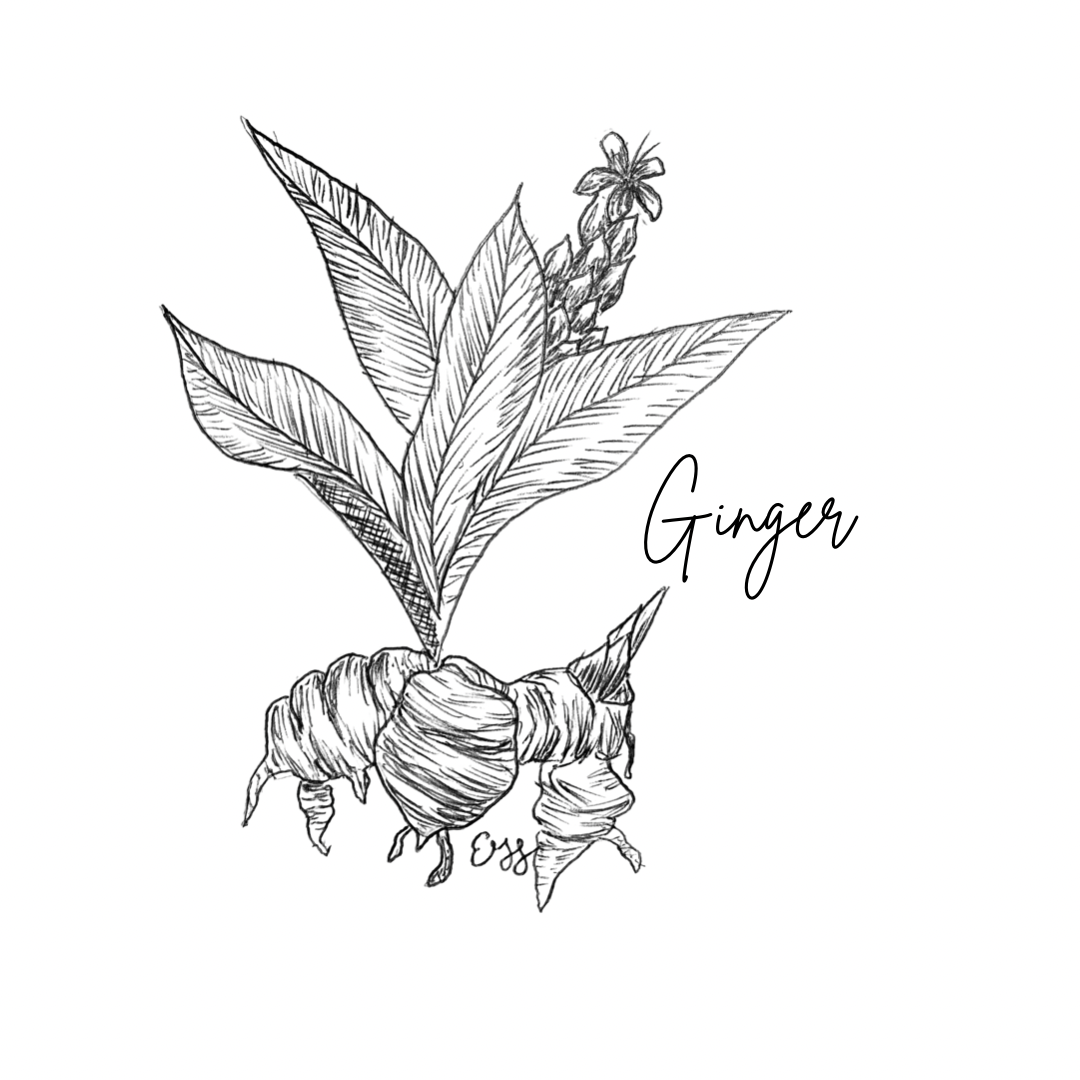Botanical of the Month: October

Plant: Ginger (Zingiber officinale)
Doterra Essential Oil: Ginger
Rishi tea: Masala Chai
The healing plant for October is our old friend ginger, a plant that has been relied upon for its healing properties for over 5000 years. Known for its abilities to quell nausea, soothe inflammation and assuage some cold and flu symptoms, it lives into its meaning as a symbol of strength. For centuries, seaman have been given ginger to chew for seasickness. I was once offered candied ginger by a kind soul seated next to me on an airplane, while I was dealing with a bad bout of airsickness and it worked. Fresh ginger tea is usually on my nightstand whenever I’m in bed with a cold. And many arthritis sufferers contend that regularly including fresh ginger in their diet helps ease some of their pain and inflammation. In each of these situations, though the ailments affect different parts of the body, it’s ginger that provides a link to feeling safer and stronger. Nausea is settled, cold symptoms are soothed, and arthritis pain is managed, all in a day’s work. Red ginger, Zingiber officinale’s fiery cousin, grown for its beautiful red flower, actually symbolizes safety. The stronger and healthier we are, the safer we feel. Some folklore even suggests carrying ginger with you as a protection from negativity or putting it under your pillow to guard against bad dreams.
Native to tropical Asia, ginger is hardy in zones 9-11. Folklore says to plant one in your yard to attract prosperity, but in our area, zone 6b, you would have to grow it in a pot if you wanted it to survive year-round. The name Zingiber originates from the Sanskrit word “srngaveram,” meaning “horn body,” referring to the antler shape of the rhizomes, fleshy underground stems that are often mistaken for roots. It’s there that ginger’s medicine is found, including the essential oil.
The rhizomes can be peeled and used fresh (sliced or grated), dried, pickled, preserved, ground, crystalized or candied. Ginger is one of the most popular culinary spices worldwide, especially in Asian and Indian dishes, where it’s used daily, as a staple spice, in curries, stews, gravies, soups, meat dishes and more. This includes being one of the main ingredients in the aromatic Indian tea “Masala chai,” our Rishi tea of the month. And, alongside garlic and green onion, ginger is a member of the “holy trinity” of Chinese cooking. In American fare, however, you’re more likely to find it in baking, holiday cookies, breads and ginger ale. As for me, I love ginger tea, made from chunks of fresh ginger, cinnamon and cloves. I find safety in its strength. If you would like the recipe, reach out to me at JessicaGiannotta@hopegrowsdev.wpengine.com
